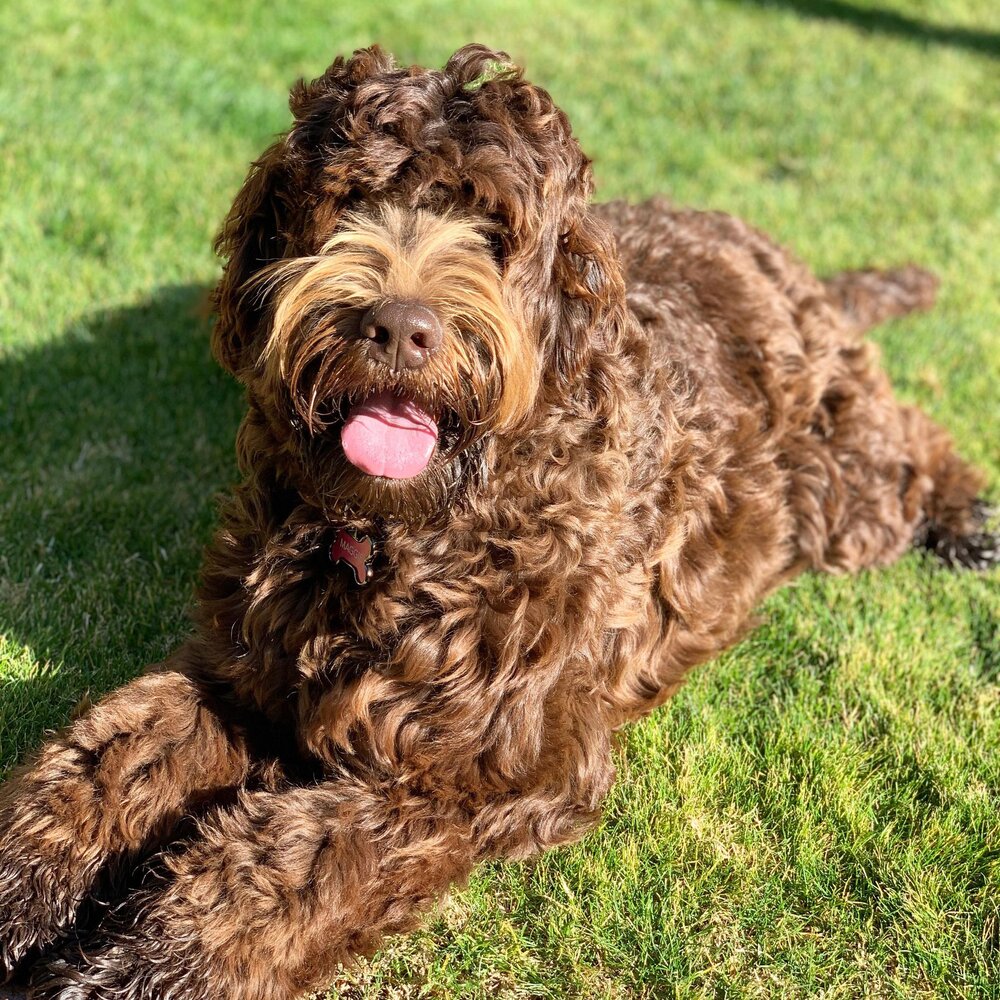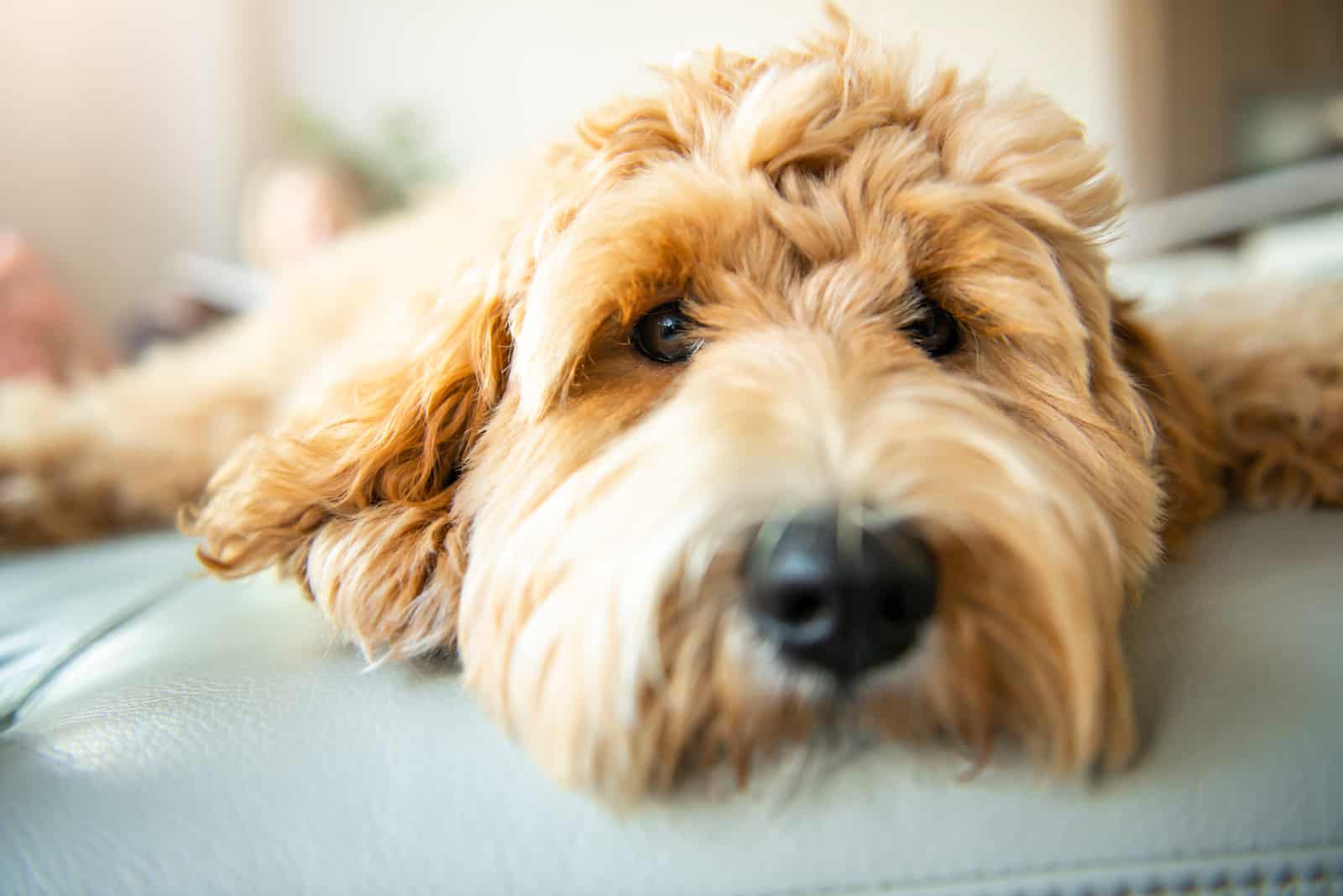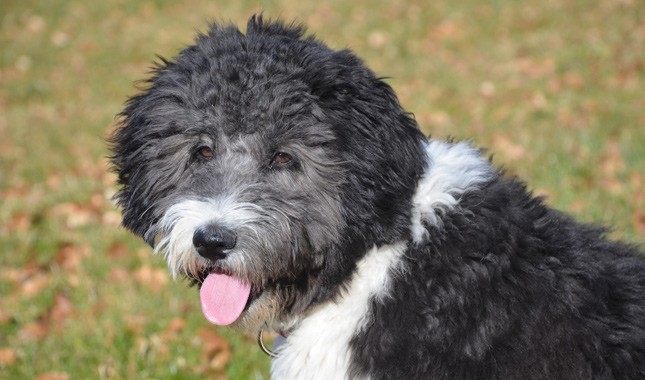Last Updated on September 12, 2021 by Fumipets
Labradoodles, a unique breed of dog developed by crossing Poodles with Labrador Retrievers, give prospective owners a variety of sizes, colours, and coats, through multi-generational breeding.
So, what is a Labradoodle with Multiple Generations? A Labradoodle with both parents being Labradoodles is known as a multi-generational Labradoodle. Labradoodles are the offspring of many generations of Poodle/Labrador crossbreeding. Labradoodles are born from the P-generation, which consists of a purebred Poodle and a purebred Labrador. Their offspring were assigned to one of the following categories:
- F1 or First Cross Generation: 1 Poodle + 1 Labrador Retriever parent
- F1b or Back Cross Generation: 1 Poodle + 1 F1 or a Multi-generational Labradoodle parent
- F2 Generation: (2) F1 Labradoodle parents
- F2b Generation: 1 F1 Labradoodle + 1 F1b Labradoodle parent\sF3 Generation: (2) F2 Labradoodle parents
- Multi-Generation: (2) F3 Labradoodle parents
Breeders often spend a lot of time researching their pups’ pedigrees in order to produce the perfect Labradoodle.
Creating the ideal Labradoodle entails more than simply creating adorable pups.
Knowing what the various categories mean may help owners better understand what breeders have to offer and can be useful when searching for and purchasing a Labradoodle.
One of the first and greatest things you can do for your dog is to arm yourself with knowledge.

Important Factors In Each Generation
Labradoodles are adorable, sociable, and clever dogs, and many people choose them for one or more of these characteristics.
Some individuals, however, select this breed because of its reputation for being low-shedding and hypoallergenic.
Surprisingly, the more fur a Labradoodle has, the less he or she sheds.
For many individuals, allergies may be a major problem. It’s often the primary reason why many dog enthusiasts decide against getting a family dog.
Many people erroneously think that allergies are caused by dog hair, while in reality, allergies are caused by the dog’s dander.
The Labradoodle is a popular choice among allergy patients. Labradoodles of various generations have distinct dander and coat characteristics.
In general, the lower you go down the age ladder, the fewer dander and allergy issues you’ll encounter.
People who are not allergic to Labradoodles may pick from any generation and base their selection on colour, coat, or size.
P-Generation
When it comes to Labradoodle generation, you may hear the term “P-Generation.” It’s quite similar to the term “F1 Generation.”
The P-Generation is the first generation of any generational breeding programme, and it consists of mating Purebred A (Labrador) with Purebred B (Labrador) (Poodle).
The resulting puppies are the first generation of Labradoodles.
The various generations of Labradoodles that may result in a multi-generational Labradoodle are listed below.

F1 (First Cross)
Puppies labelled as F1 are the product of a Standard Poodle parent mating with a Labrador Retriever parent.
Because the Poodle and Labrador Retriever are such dissimilar breeds, the pups may show a variety of characteristics.
Their coats may have various thicknesses, textures, and lengths in addition to diverse colours.
Some of the pups may have shedding or non-shedding characteristics owing to their coats. Some breeders refuse to breed F1 pups because of irregularities in the breed line.
F1b (Back Cross)
The F1b is a puppy with a Poodle for one parent and either an F1 (First Cross) or a Multi-generational Labradoodle for the other.
F1b pups typically have non- or low-shedding coats. The F1b is made up of 75% Poodle and 25% Labrador Retriever.
F2 Generation
The F2 Labradoodle is the result of combining two F1 Labradoodles. The pups are a 50/50 mix of Poodle and Labrador Retriever.
F2b Generation
One parent is an F1 Labradoodle, while the other is an F1b Labradoodle, resulting in the F2b Labradoodle. Poodles make up 75% of the litter, while Labrador Retrievers make up 25%.
F3 Generation
Two F2 hybrid parents combine to create the F3 Generation Labradoodle. The pups are a 50/50 mix of Poodle and Labrador Retriever.

Multi-Generational Labradoodles
These Labradoodles, also known as Multigen, are the offspring of two F3 Generation Labradoodles. To put it another way, both parents have to be Labradoodles.
Breeders consider multi-generational Labradoodles to be the “cream of the crop,” since they are the product of decades of breeding skill and patience.
Because of the reliable outcomes in the pups, many breeders choose multi-generational Labradoodles.
- Excellent temperament
- Attractive appearance
- Consistent, high-quality coats
- Allergy-friendly
- Non-shedding
- Affectionate and loving
Multi-Generational Labradoodle Coats
Although there are numerous reasons why breeders choose multi-generational Labradoodles, the coat is one of the most important.
They’ve managed to blend the finest characteristics of each dog via a lot of study, practice, and trial-and-error breeding to produce the ideal pups with the best coats.
Many words have been used to characterise the coat of the Labradoodle, but there are only two genuine coat types in the multi-generational Labradoodle: fleece or wool.
Fleece
The smooth and silky fleece coat features waves and curls, but the quantity of waves and curls varies. When a dog walks about, the fur on a fleece coat will flow and ripple. Wavy fleece hair may reach a length of 4 to 6 inches. Because these dogs do not shed, the hair must be trimmed or physically taken out as the dog matures.
Wool
Wool This hair, unlike the fleece coat, does not move with the dog’s movement. Wool-coated Labradoodles should have their coats trimmed a couple of times a year.

Recommended Grooming Tools:
Slicker brush — For everyday brushing, this self-cleaning slicker brush swiftly and simply removes knots and releases hair at the touch of a button.
Comb — A steel, dual-sided comb goes all the way down to the skin to prevent mats from developing, making it ideal for all Doodle dogs.
Dematting comb – This is a great tool to keep on hand in case you get those pesky mats. It makes eliminating mats a breeze without having to remove big pieces of fur.
You’ll probably add to this list as time goes on, but for now, the tools listed above are a good place to start.
Fleece and wool coats have the following features in common:
- The absence of dog odour
- Naturally dirt-repellent if bathed regularly
- Both come in various colours
Years of successful generational breeding have resulted in more Labradoodle choices than ever before.
Labradoodles may be found in a variety of colours, including merle, sable, and black-tipped variants, in addition to the standard colours. The following are some popular colour combinations:
- Chocolate
- Caramel
- Red
- Chalk
- Gold
- Apricot
- Black
- Blue
- Chocolate
- Multi-patterned
Advantages Of Multi-Generational Labradoodles
Multi-generational breeding is often used by Labradoodle breeders to enhance not just the breed but also the consistency of their litters.
They selected this technique of breeding because it enables them to “mix and match” the parents with the greatest characteristics, such as coat, temperament, size, and intellect.
These parents’ pups are often social, kind, non-aggressive, perceptive, and extremely clever.
They possess the characteristics that make them ideal service or therapy dogs.
One of the most significant benefits of multi-generational Labradors is that the breeders have had years of experience breeding these dogs over many generations, so the outcomes are not random or coincidental.
They may concentrate on the temperament, health, coat, trainability, and even coat quality of the dog’s lineage.
The quality and design of a garment may not seem significant to one person, but it may make a big difference to someone who suffers from allergies.
Parents often remark on how unique each of their children is, and they frequently wish they could combine the finest characteristics of each kid to create the ideal child.
Not that there is such a such as a “perfect kid,” but a Multi-generational Labradoodle breeder nearly does this when selecting the sire and mother.
The generation of your Labradoodle is just a tiny part of who they are. The way you nurture and teach your puppy has a significant impact on their personality.
There’s a good way to do it and a bad way to do it, just like everything else.

Conclusion
If you’re a Labradoodle fan who’s thinking about acquiring one, this overview should provide you with all the information you need to make an educated choice about this fascinating breed.
Labradoodles are a great option for a pet, service dog, or lifelong companion, whether you’re a single person or part of a family.
Related Questions:
Are Multi-Generational Labradoodles Really Better?
It’s not so much about being better than it is about being more suitable.
Because the breeders are combining generations of traits from their finest dogs, the end result is high-quality Labradoodle pups that are suitable for a variety of settings, such as a family pet, a service dog, or just an allergy-free, low-shed companion dog.
Are Multi-Generational Labradoodles More Expensive?
When it comes to these dogs’ prices, you get exactly what you paid for. (Here are some real-world pricing samples.)
Many beautiful Poodles, Labrador Retrievers, and Labradoodles are available, and many of them are likely to be quite cheap.
But how much do you know about the dog’s ancestors and heritage? You get all the knowledge you need with a multi-generational Labradoodle.
Do Multi-Generational Labradoodles Have Longer Lifespans?
Labradoodles have certain health problems, but they are usually healthy dogs with 12- to 15-year lifespans.
Despite the fact that they are the product of decades of meticulous breeding, both Poodles and Labs are susceptible to certain health problems.
If you’re thinking of getting a Labradoodle, be sure the parents are healthy and that your dog receives regular exams from your veterinarian.


















